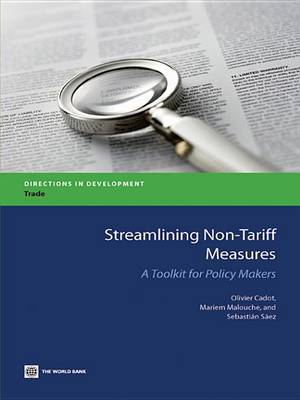This toolkit provides a novel approach and a set of tools that allow policymakers and analysts to identify non-tariff measures (NTMs), assess their trade restrictiveness and impact on prices and welfare, and to strengthen the institutional coordination mechanism, transparency, and regulatory governance on NTMs. It also aims at encouraging economies to increasingly address the NTM agenda from a domestic competitiveness and/or poverty perspective rather than from a mercantilist standpoint of concessions to trading partners. NTMs are policy measures, other than ordinary customs tariffs, that can potentially have an economic effect on international trade in goods, changing quantities traded, or prices or both. While most NTMs are already subject to WTO disciplines, the main challenge is to allow governments to address public policy concerns without unnecessarily hurting trade competitiveness and while preventing disguised protectionism. This toolkit is predicated on the idea that the complexity and diversity of NTMs should be recognized. Problems should be identified at the country level through consultations with the private sector, and technical solutions should be sought through careful analysis and private/public dialogue. The underlying philosophy is similar to what is known as "Regulatory Impact Assessment" (RIA), but applied to the review of existing measures (no ex ante analysis), in response to specific demands from countries struggling with legacies of complicated and penalizing regulations. Dealing with existing measures has the advantage of responding to an immediate need and focusing on measures whose effects are known. The toolkit is organized as follows. Chapter 1 discusses the newly revamped NTM classification and pervasiveness of NTM. Chapter 2 elaborates on the analytics of an NTM review, walking the reader step by step through the key questions. Chapter 3 focuses on the institutional set up and key principles to successfully pursue the streamlining of regulations. Finally, chapters 4 and 5 provide some practical cases of streamlining both at the country and regional levels, and for product specific examples.
- ISBN10 0821395114
- ISBN13 9780821395110
- Publish Date 23 June 2014 (first published 30 May 2012)
- Publish Status Active
- Publish Country US
- Imprint World Bank Publications
- Format eBook
- Pages 211
- Language English
